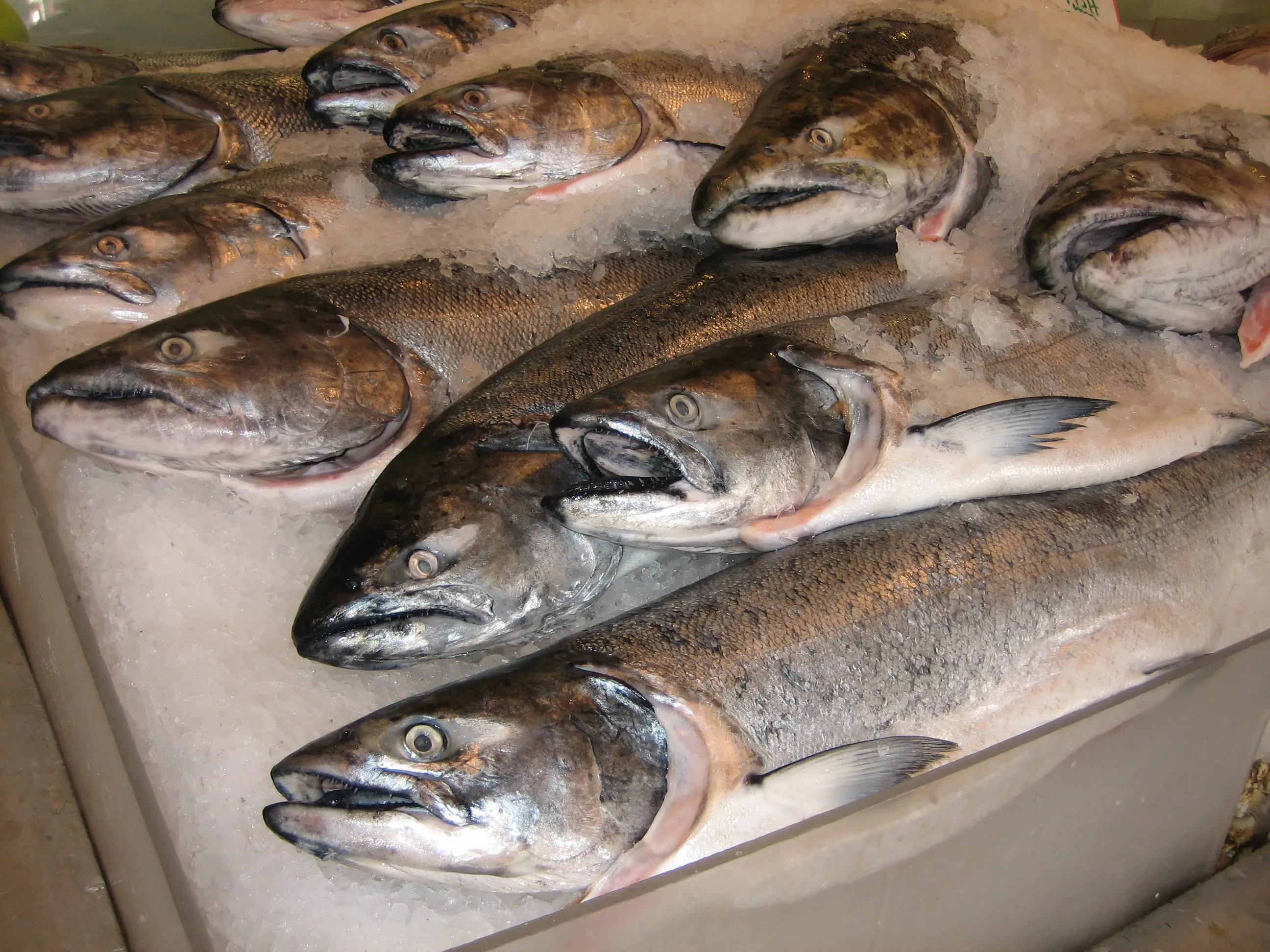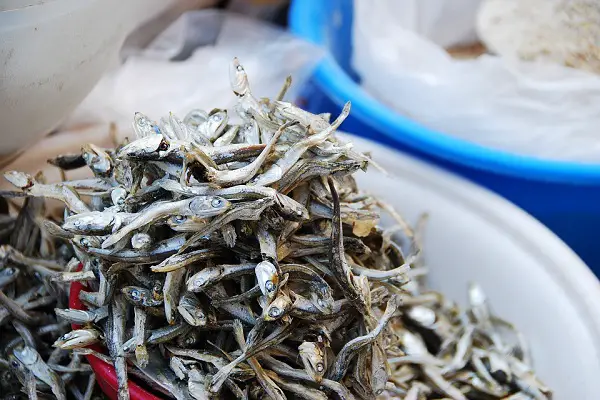
If we lived in a environmentally cleaner world, fish would be an incredibly healthy meal: packed with omega-3 fatty acids and vitamins D and B2, as well as minerals such as calcium, iron, iodine, and potassium. These nutrients protect the heart, slow down the aging process in the brain, help reduce the risk of depression, and prevent autoimmune diseases. If only we didn’t pollute the planet.
In today’s world, each of us has to think hard to consider the benefits of eating fish versus its risks. Its most-known risks remain amounts of heavy metal mercury that collects over time in the fish’s body. Fish that lives a long time and has a large body weight has a higher concentration of mercury such as swordfish, shark, king mackerel, and tuna.
The FDA does not recommend consuming these types of fish more often than once a month. Many health researchers suggest avoiding them completely.
There are types of fish with lower amounts of mercury, such as tilapia, and anchovies.
But these types of fish have other hazards. Tilapia, farm-raised tilapia, is often called the most unhealthy fish on the market because it is fed with GMO corn and soy and has high amounts of harmful fats instead of the good ones (although its skin may potentially be beneficial in medicinal properties).
Anchovies, a new study found, have another unhealthy risk. They do not accidentally ingest the plastic polluting our oceans, but they actively spend their looking for it.
Fish That Eats Plastic Because….It Smells Good?
Scientists have known that micro-plastics are making their way into our food simply because of how polluted our waters are. After all, there is an estimated 5.25 trillion plastic particles on the surface of the sea.
But a recent study just discovered that fish go looking for plastic debris to eat because microorganisms colonize it and make it smell good; make it smell like food.
“Isn’t it the most ironic and Shakespearean twist to all of this?” said study co-author Matthew Savoca.
It’s not surprise that according to EarthSky, a Texas based non-profit, found in February 2021 that about 2/3 of marine fish are ingesting plastic around the world, according to an analysis of over 100 different scientific papers.
We pollute the oceans with plastic. Fish get tricked into eating it. And then we eat that fish, and consume all of the plastic ourselves — toxic plastic.
To find this out, researchers collected colonies of anchovies and filled fish tanks with four different test stimuli: clean water, water scented with clear plastic, water scented with 3-weeks-old plastic from the ocean, and water scented with krill (their tiny food organisms).
Anchovies had barely any interest in the plain water or the water scented with clean plastic. They had a lot of interest in the water scented with ocean-soaked plastic. They reacted similarly as they would have to actual food.
Study researchers explained that over time pieces of plastic get coated with microorganisms and start to lose the smell of plastic and resemble the smell of fish food.
Some plastic pieces can also look like food, making it even more appealing to fish.
Plastic may also be plain tasty to organisms that live in the sea. Another study by the Duke scientists looked at corals, who do not eat with their eyes, but figure out with their version of a tongue what tastes good. The study found that corals eat plastic like it’s “candy,” suggesting that it must taste good to them. Are fish the same?
Whether it is for the smell or the taste, we now know that fish eats plastic on purpose. And these plastics carry many toxins, and not just in their raw state.
Before being eaten by fish, ocean plastic also absorbs other toxins from the water, making the plastic even more toxic for fish and for people later eating that fish.
“Plastics – when they end up in the ocean – are a sponge for chemicals already out there. We found that when the plastic interacts with the juices in the [fish’s] stomach, the chemicals come off the plastic and are transferred into the bloodstream tissue,” said study author Chelsea Rochman.
But although these plastics cause tumors and liver problems in fish, often times they do not kill it. Meaning, a fish heavily contaminated with plastics and chemicals absorbed by plastic can end up on your plate for dinner.

Anchovies may look small, but they ingest a large amount of microplastics.
How Much Plastic Do We Consume Annually?
Belgian researchers estimated that people who love fish and seafood ingest about 11,000 tiny pieces of plastic every year. This amount of plastic can lead to long-term health issues, and it’s only going to get higher each year. By the end of the century, researchers predict that any seafood eater will ingest 780,000 pieces of plastics annually.
These plastics can come from mussels, which filter seawater and ingest micro-plastics by accident. They also come from many fish species. Anchovies are not the only fish that react to ocean plastic in this way. There are over 50 types of fish that eat plastic.
In one of the studies by the University of California, Rochman tested 76 fish samples from 12 species caught in California and 76 fish samples from 11 species caught in Indonesia.
A total of 67% of California-caught fish had human-derived debris. The number was a little lower for Indonesia-caught fish: 55% of the samples were contaminated with debris.
In the U.S., the debris was mainly made up of textile fibres (a huge environmental issue), while Indonesia-caught fish was mainly contaminated with plastics.
The reason for different types of contaminants is due to different resources available in the countries.
In the U.S., there are plastic recycling options, so the plastic does not end up in the ocean as much. In Indonesia, plastic waste is often thrown out directly into the coastal regions.
Meanwhile, the U.S. Coasts have high levels of textile pollution due to heavy use of washing machines by the American population.
The fish affected by both of these pollutants were: mackerel, shortfin scad, herring, anchovy, bass, and salmon.
“This clearly shows that plastic is in our food chain. There is now quite a bit of literature showing that a wide variety of marine species consume plastic. It is likely to be happening everywhere,” said Pete Davison, Farallon Institute for Advanced Ecosystem Research.
Looking at all of the new and eye-opening research, are there enough reasons to avoid fish? While scientists have not yet agreed on the risk versus benefits ration of fish consumption, Rochman recommends no more than two servings a week, and to avoid swordfish that lives long enough to ingest high amounts of both: plastic and mercury.
You may also add a chlorella supplement to your regiment to slowly detox any heavy metals and other contaminants from your body. It is okay to eat fish every once in a while, as long as you choose it wisely.
Recommended reading:
Microplastic-free Sea Salt Special Offer
This article was first published in November 2017 and updated in March 2021.
Thanks for installing the Bottom of every post plugin by Corey Salzano. Contact me if you need custom WordPress plugins or website design.




